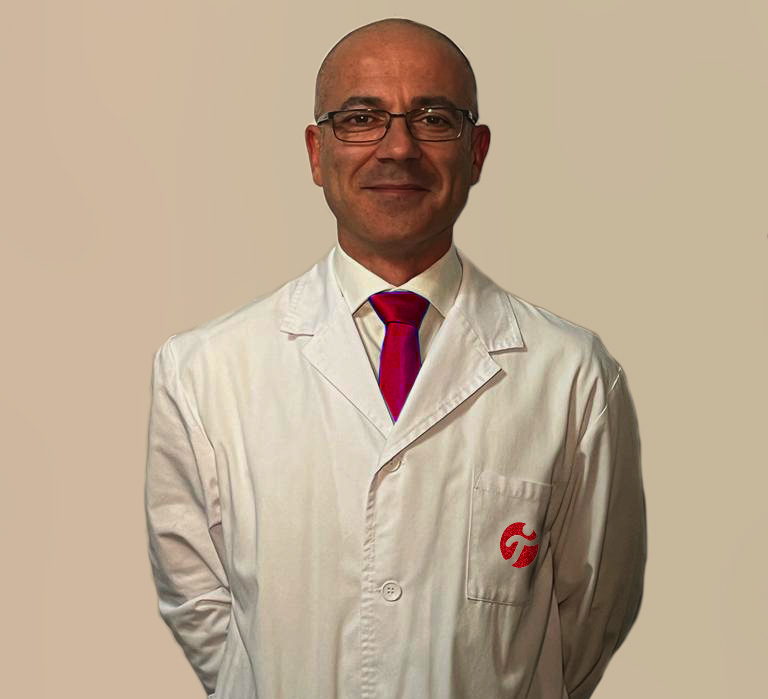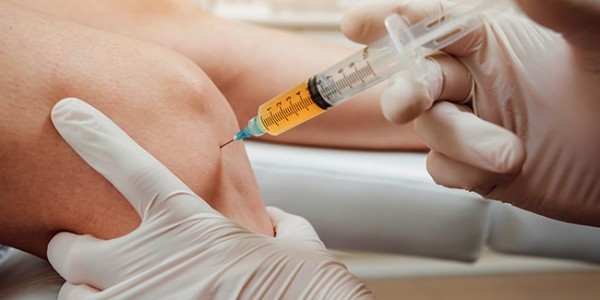![[VIDEO] Ultrasound-Guided Injection for Trigger Finger](https://drjordijimenez.com/imagen/100/100/Imagenes/infiltracion-ecoguidada-dedo-resorte-drjordijimenez.jpg)
- Home /
- TREATMENTS /
- INFILTRATIONS WITH PLATELET-RICH PLASMA (PRP) /
- PLANTAR FASCIITIS/FASCIOSIS: TREATMENT WITH ULTRASOUND-GUIDED INFILTRATIONS WITH PLATELET-RICH PLASMA (PRP)
PLANTAR FASCIITIS/FASCIOSIS: TREATMENT WITH ULTRASOUND-GUIDED INFILTRATIONS WITH PLATELET-RICH PLASMA (PRP)
PLANTAR FASCIITIS/FASCIOPATHY: ULTRASOUND-GUIDED INJECTIONS WITH PLATELET-RICH PLASMA (PRP)
DR. JORDI JIMÉNEZ

What is the plantar fascia?
The plantar fascia is a thin fibrous band of connective tissue that connects the heel to the base of the toes.
What’s the difference between fasciitis and fasciopathy?
Plantar fasciitis refers to inflammation of this structure, while fasciopathy (or fasciosis) is a degenerative condition marked by thickening of the fascia, disruption of its architecture, occasional tears, increased vascularity, and repeated failed attempts at self-repair. These degenerative changes are often caused by repetitive biomechanical stress to the plantar fascia.
Often associated with this condition is a calcaneal spur—an abnormal bone growth at the fascia insertion—caused by prolonged and excessive traction. In most cases, the spur is considered a consequence, not a cause, of heel pain.
Why does plantar fasciitis occur?
Plantar fasciitis is the most common cause of heel pain, with a population prevalence of about 10%. It is more common in women than in men. Risk factors include flat feet or high arches, excessive foot pronation, obesity, prolonged standing, or tight calf muscles.
How is plantar fasciitis treated?
First-line treatments include nonsteroidal anti-inflammatory drugs (NSAIDs), custom insoles to correct poor foot posture, eccentric stretching exercises, and extracorporeal shockwave therapy. These are effective in about 90% of cases.
Intrafascial corticosteroid injections have also been widely used for their anti-inflammatory effects. However, concerns exist due to the risk of fascia rupture and fat pad atrophy. Ultrasound-guided **perifascial** injection (around, not into, the fascia) may help reduce these risks. Furthermore, corticosteroids typically provide short-term relief, with no significant long-term benefit compared to placebo.
Plantar fasciitis treatment with ultrasound-guided PRP injections
Several studies support the use of platelet-rich plasma (PRP) for treating plantar fasciitis/fasciopathy. As described in other articles, PRP has anti-inflammatory and regenerative properties, thanks to its high concentration of platelet-derived growth factors and anti-inflammatory cytokines.
Many studies have compared PRP with other treatments such as corticosteroids, shockwaves, or autologous whole blood. These trials aim to evaluate which injection treatment provides better results in the short, medium, and long term.
Most studies find that PRP does not show significantly better results than other therapies within the first three months. However, published data suggest a noticeable improvement in pain and function between 6 and 12 months after PRP treatment—possibly making it superior to corticosteroids or autologous blood in the long run.
One limitation is the great variability in how PRP is prepared (type of kit used, addition of leukocytes, centrifugation methods, activation protocols), which makes it difficult to draw definitive scientific conclusions.
Ultrasound guidance plays a key role in PRP treatment. It allows the precise identification of degenerated or torn fascia, ensuring the PRP is injected exactly where needed for maximum benefit.
 |
DR. JORDI JIMÉNEZ GENERAL TRAUMATOLOGY SPORTS TRAUMATOLOGY ULTRASOUND-GUIDED THERAPIES |
Suffering from plantar fasciitis? Book an appointment with Dr. Jordi Jiménez. He will attend to you at the Palma de Mallorca clinic and help you regain your quality of life.
RELATED NEWS
Frequently asked questions about the use of platelet-rich plasma (PRP) in traumatology
1.- What is PRP and how does it work in traumatology? Platelet-rich plasma (PRP) treatment consists of the application of plasma, extracted from the patient, with a platelet concentration well above normal. The purpose of this treatment is to stimula...
What is platelet-rich plasma and what is its use in traumatology?
What is platelet-rich plasma (PRP)? Platelet-rich plasma (PRP) is a platelet concentrate obtained from a patient's autologous blood. This means that the patient's own blood is extracted and processed to obtain this product. PRP is especially...



![[VIDEO] Ultrasound-guided infiltration of the lumbar facets](https://drjordijimenez.com/imagen/100/100/imagenes-pagina/sindrome-facetario-lumbar-drjordijimenez (1).jpg)
![[VIDEO] Ultrasound-guided infiltration of the hip joint](https://drjordijimenez.com/imagen/100/100/Imagenes/valgo-dinamico-rodilla-drjordijimenez.jpg)